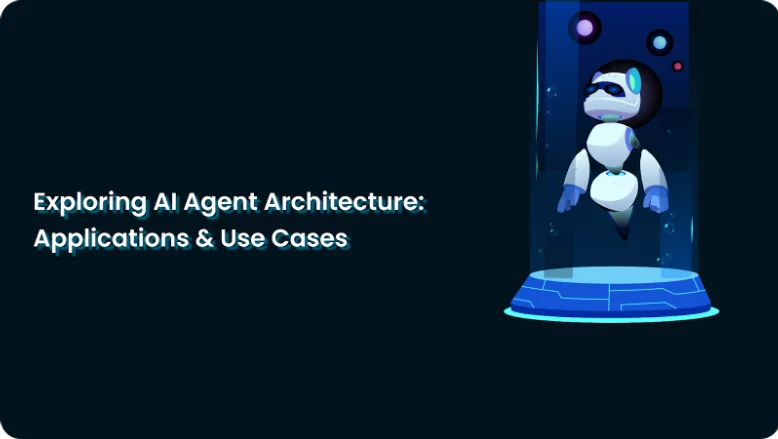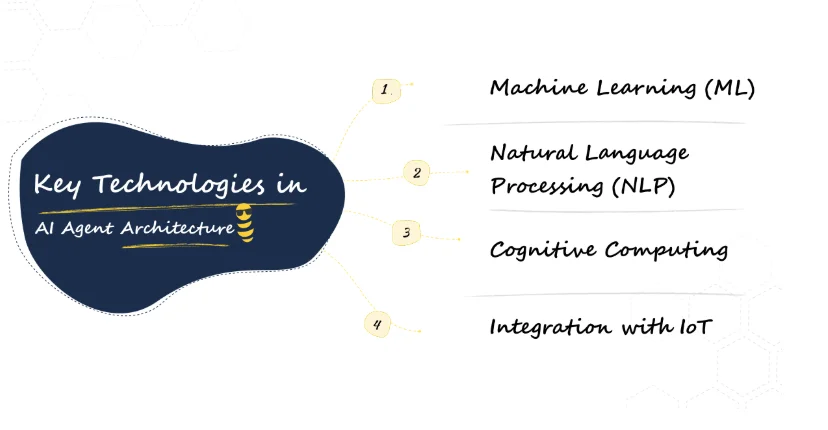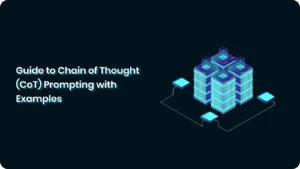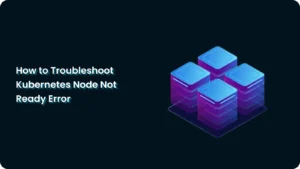Inside AI Agent Architecture: How Modern Systems Think, Act, and Automate

Artificial Intelligence (AI) has become a driving force behind technological advancements, revolutionizing how industries operate. Among the many breakthroughs in AI, AI agent architecture stands out as a critical framework for building intelligent systems that can perceive, reason, and act autonomously.
From automating mundane tasks to making complex decisions, AI agents are transforming industries like healthcare, finance, customer support, and manufacturing. Understanding the underlying architecture of these agents is essential to unlocking their full potential in real-world applications.
In this blog, we’ll dive into the concept of AI agent architecture, its core components, key technologies, and various applications. By the end, you’ll have a comprehensive understanding of how AI agents work and their transformative role in modern technology.
What is AI Agent Architecture?
At its core, AI agent architecture is the blueprint behind how intelligent systems think and act. It defines how an agent senses its environment, makes sense of what it sees, decides what to do, and then acts, all without human intervention. Whether it’s a chatbot handling support tickets or a self-driving car navigating traffic, this architecture powers the agent’s ability to operate independently and intelligently in complex, real-world conditions.
Inside the Brain of an AI Agent: 4 Core Layers That Make It Tick
Every AI agent, whether it’s a chatbot, self-driving car, or trading bot, runs on a structured architecture, a stack of capabilities that let it sense, think, act, and improve. Let’s break down these layers with real-world context:
1. Perception Layer: The Eyes and Ears
This is where the agent gathers raw data from the world, its version of “seeing” and “hearing.” It could be text from a user, images from a camera, or sensor data from a factory floor.
Example:
A customer service chatbot “hears” you through your typed message or voice input. That’s its perception at work.
2. Reasoning Layer: The Decision-Maker
Once it senses something, the agent needs to make sense of it. That’s the job of the reasoning layer, where logic, planning algorithms, and machine learning models kick in to analyze the situation and figure out what to do next.
Example:
Think of Google Maps rerouting you because of traffic. It reasons: “Based on new data, this other path is faster.”
3. Action Layer: The Doer
Now comes execution. The action layer translates decisions into real-world outcomes, triggering software functions, moving physical components, or generating human-facing responses.
Example:
After reasoning, the chatbot sends a helpful message. A robot arm picks the right item off a shelf. A system alert gets fired. All action.
4. Learning Module: The Brain That Grows
The smartest agents don’t just act, they improve. This module helps the agent learn from every interaction, adjust its behavior, and get better over time. It can be powered by reinforcement learning, user feedback, or pattern recognition.
Example:
Your streaming app recommends better shows the more you use it, it’s learning your taste through your behavior.
Examples of AI Agent Architecture in Action
- Chatbots: Virtual agents that handle customer queries.
- Autonomous Vehicles: Cars that perceive traffic, plan routes, and navigate obstacles.
- Smart Assistants: AI systems like Alexa and Siri that understand and act on voice commands.
AI agent architecture is the backbone of intelligent systems, enabling them to perform tasks efficiently and adapt to ever-changing environments. In the next section, we’ll explore the key technologies that power these architectures, such as machine learning and natural language processing (NLP).
Key Technologies in AI Agent Architecture

Modern AI agents combine multiple technologies to sense, reason, act, and improve—enabling intelligent automation across domains. Here’s a breakdown of core components driving advanced agentic systems:
1. Machine Learning (ML)
Role in AI Agents: ML enables agents to make data-driven decisions by identifying patterns and learning from historical data.
Techniques Used:
- Supervised Learning: Agents learn from labelled datasets to predict outcomes (e.g., fraud detection).
- Unsupervised Learning: Used to identify hidden patterns in data (e.g., customer segmentation).
- Reinforcement Learning: Teaches agents to make decisions by rewarding desired actions (e.g., training robots).
Example:
An AI-powered logistics agent uses ML to optimize delivery routes based on historical traffic data.
2. Natural Language Processing (NLP)
Role in AI Agents: NLP enables agents to understand and generate human language, making them essential for chatbots, virtual assistants, and language translation tools.
Applications:
- Sentiment analysis for customer feedback.
- Context-aware chatbots that engage users conversationally.
Example:
A virtual assistant like Alexa interprets voice commands to perform tasks like playing music or controlling smart devices.
Cognitive Computing
Role in AI Agents: Mimics human thought processes like reasoning, problem-solving, and decision-making.
Applications:
- Diagnosing diseases in healthcare.
- Personalized financial advice in fintech.
Example:
IBM Watson uses cognitive computing to provide treatment recommendations in oncology.
4. Integration with IoT (Internet of Things)
Role in AI Agents: IoT devices provide real-time data that fuels AI agents, allowing them to interact with physical environments.
Applications:
- Smart home systems (e.g., thermostats, lighting).
- Predictive maintenance in industrial equipment.
Example:
AI-powered IoT systems in manufacturing monitor machine health and predict failures.
These technologies form the backbone of AI agent architecture, enabling agents to function effectively across diverse use cases.
Types of AI Agent Architectures
AI agent architectures are categorized based on how they process information and make decisions. Here are the three primary types:
1. Reactive Architecture
Characteristics:
- Operates based on current inputs without storing historical data or planning for the future.
- Simple and efficient, but lacks adaptability to complex scenarios.
Applications:
- Basic chatbots that provide predefined answers.
- Temperature control systems.
Example:
A thermostat adjusts room temperature based on current readings but cannot predict future needs.
2. Deliberative Architecture
Characteristics:
- Uses reasoning and planning to make decisions.
- Considers long-term goals and evaluates multiple options before acting.
Applications:
- Advanced robotics, autonomous vehicles, and strategic gaming AI.
Example:
An autonomous vehicle evaluates multiple routes and chooses the safest and fastest option.
3. Hybrid Architecture
Characteristics:
- Combines reactive and deliberative elements for greater flexibility and adaptability.
- Balances immediate responsiveness with long-term planning.
Applications:
Smart virtual assistants like Siri or Alexa provide immediate responses while learning from user interactions.
Example:
A gaming AI that reacts to player movements in real-time while planning strategies to win.
Understanding these architectures helps determine the best approach for designing AI agents suited to specific applications. In the next section, we’ll explore how these architectures are applied in real-world scenarios.
Applications of AI Agent Architecture
AI agent architecture is transforming industries by enabling intelligent systems to automate tasks, improve efficiency, and deliver personalized experiences. Here are some of the most impactful applications:
1. Customer Support and Chatbots
Description:AI-powered chatbots handle customer queries, automate repetitive tasks, and provide 24/7 support.
Example Applications:
- Answering FAQs and resolving common issues without human intervention.
- Escalating complex issues to human agents with detailed context.
Example:
NudgeBee’s AI-driven troubleshooting agents simplify Kubernetes management by automating error detection and providing guided resolutions.
2. Healthcare
Description:AI agents assist in diagnosing diseases, monitoring patients remotely, and planning treatments.
Applications:
- AI systems analyze medical data to detect anomalies or predict potential health risks.
- Remote patient monitoring for chronic conditions using wearable IoT devices.
Example:
IBM Watson Health uses AI to recommend treatment options for oncologists based on patient data and medical research.
3. Autonomous Vehicles
Description: AI agents are at the core of autonomous vehicles, enabling them to navigate, detect obstacles, and make real-time decisions.
Applications:
- Lane detection and collision avoidance.
- Predicting traffic patterns and optimizing routes.
Example:
Tesla’s autopilot system uses AI agent architecture to process sensory data and ensure safe driving.
Finance and Fraud Detection
Description: AI agents enhance financial systems by automating processes and identifying anomalies.
Applications:
- Detecting fraudulent activities in real-time using ML algorithms.
- Automating loan approvals and managing investment portfolios.
Example:
AI-driven systems flag unusual transactions to prevent credit card fraud.
Manufacturing and Industry
Description: AI agents streamline operations in manufacturing by automating processes and enabling predictive maintenance.
Applications:
- Monitoring equipment health to predict and prevent breakdowns.
- Managing supply chains with real-time data analytics.
Example:
Smart factories use AI to optimize production schedules and reduce downtime.
These applications showcase how AI agent architecture is shaping industries by driving automation, enhancing decision-making, and creating more responsive systems. In the next section, we’ll dive into real-world use cases where these architectures are making a tangible impact.
Benefits of AI Agent Architecture
AI agent architecture brings significant advantages to industries by enabling intelligent systems that are adaptable, efficient, and user-centric. Here are the key benefits:
1. Scalability
AI agent architectures are designed to handle increasing workloads without performance degradation.
Example: E-commerce platforms use scalable AI agents to handle spikes in traffic during sales or promotions.
2. Cost Efficiency
Automates repetitive tasks, reducing the need for manual intervention and lowering operational costs.
Example: AI-powered customer support agents reduce the need for large support teams while ensuring 24/7 availability.
3. Personalization
Provides tailored user experiences by analyzing data and adapting to individual preferences.
Example: Streaming platforms like Netflix use AI agents to recommend content based on viewing history.
4. Enhanced Decision Accuracy
Uses data-driven insights and predictive models to make accurate and informed decisions.
Example: AI agents in finance detect anomalies in transactions, reducing fraud and errors.
5. Continuous Learning and Improvement
AI agents equipped with learning modules can improve over time, adapting to changing environments and needs.
Example: Virtual assistants like Siri enhance their responses by learning from user interactions.
AI agent architecture delivers immense value by driving efficiency, improving user experiences, and enabling smarter decision-making. However, these systems also face challenges that need to be addressed for broader adoption.
Challenges and Limitations of AI Agent Architecture
Despite its transformative potential, AI agent architecture comes with its own set of challenges and limitations. Here are the key concerns:
1. Data Quality and Availability
AI agents rely on high-quality data for accuracy. Poor or incomplete datasets can lead to errors or biases in decision-making.
Example: An AI system in healthcare may provide incorrect diagnoses if trained on unrepresentative data.
2. Scalability Issues
Managing large-scale AI systems in real-time can strain resources and infrastructure.
Example: Autonomous vehicles require significant computational power to process sensory data and make decisions instantly.
3. Ethical Concerns
AI systems may exhibit bias or unfairness due to flaws in training data or algorithms.
Example: AI-based hiring tools have faced criticism for perpetuating biases in recruitment decisions.
4. Security Risks
AI agents are vulnerable to adversarial attacks and data breaches, compromising their functionality and user trust.
Example: Hackers can manipulate AI models by injecting malicious data, leading to incorrect outputs.
5. High Implementation Costs
Developing and deploying AI agents requires significant investment in infrastructure, skilled personnel, and resources.
Example: Small businesses may struggle to adopt advanced AI systems due to budget constraints.
While these challenges pose hurdles, advancements in AI research and development are continuously addressing them, paving the way for more robust and reliable AI agent architectures. In the next section, we’ll highlight how NudgeBee leverages AI agent architecture to transform Kubernetes troubleshooting.
How NudgeBee Leverages AI Agent Architecture
NudgeBee stands out as a prime example of how AI agent architecture can be harnessed to address complex technical challenges. By leveraging cutting-edge AI technologies, NudgeBee simplifies Kubernetes troubleshooting and optimizes cluster performance.
Key Features of NudgeBee’s AI Agent Architecture
Pre-Trained Specialty Models
- NudgeBee uses pre-trained AI models designed specifically for Kubernetes operations.
- These models help detect common errors like Node Not Ready, CrashLoopBackOff, and Pending Pods in real time.
Extensible Architecture
- NudgeBee uses pre-trained AI models designed specifically for Kubernetes operations.Offers the flexibility to integrate custom tools, agents, and workflows based on your specific requirements.
- Ensures compatibility with existing Kubernetes setups for seamless implementation.
Automated Troubleshooting
Provides guided remediation steps tailored to each error, saving time and reducing manual effort.
Example: Automatically recommends fixes for resource exhaustion or misconfigured pods.
Real-Time Monitoring and Alerts
- Tracks CPU, memory, and disk usage to identify resource bottlenecks.
- Sends proactive alerts for anomalies, allowing you to address issues before they escalate.
Anomaly Detection and Predictive Insights
Uses machine learning to analyze patterns and predict potential failures.
Example: Flags nodes that are at risk of disk pressure and suggests preventive actions.
Why NudgeBee is a Game-Changer
- Efficiency:Automates troubleshooting, reducing resolution times.
- Proactive Management: Prevents errors with real-time insights and alerts.
- Scalability:Designed to handle Kubernetes clusters of all sizes.
Transform how you manage Kubernetes clusters with NudgeBee. Explore our AI-powered troubleshooting solutions today!
Conclusion
AI agent architecture has emerged as a cornerstone of modern technology, driving innovation across industries by enabling intelligent, autonomous systems. From customer support chatbots to autonomous vehicles, this architecture powers solutions that are scalable, efficient, and adaptive to evolving needs.
In this blog, we explored the fundamental components of AI agent architecture, the key technologies that fuel it, and its real-world applications and benefits. While challenges such as data quality, scalability, and security remain, advancements in AI continue to address these hurdles, making intelligent agents more robust and reliable.
Tools like NudgeBee demonstrate the immense potential of AI agent architecture by automating complex tasks such as Kubernetes troubleshooting. With pre-trained models, guided remediation, and real-time monitoring, NudgeBee leverages AI to optimize operations and enhance efficiency.
Ready to harness the power of AI agent architecture for your Kubernetes environment?
Explore NudgeBee today and take your cluster management to the next level.





